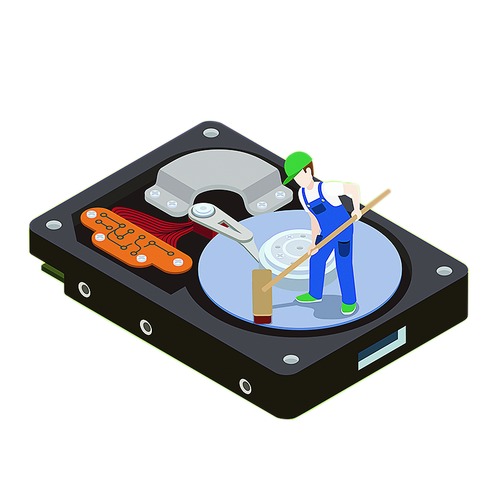
We often believe that the files we delete from our computer or laptop are gone forever. You probably did not know, but the file still resides on your hard drive. Only the indexes and the links to the files are hidden from the Windows operating system. They are easily recoverable with data recovery software such as Recuva, a free Windows utility, until they are written over.
While this is not a problem when you are constantly using your computer, it may become an issue if you are planning to resell your computer or throw it away. Many of us mistakenly believe that formatting gets rid of all your data permanently but this is not true. Formatting is just another form of deleting.
Experienced technicians can retrieve your files in a jiffy unless they are overwritten. If you want your data gone for good then you should wipe or erase it. You can do this by using the "Touch" method or the "Bang" method. Touch method is wiping or scrubbing it with programs and utilities. You can also disrupt the magnetic field of the data storage or physically destroy the hard disk by the Bang method.
Cipher, a tool that comes with Windows, can be used to encrypt or decrypt files on NTFS drives. This is the New Technology Files System that Windows uses to store files. What is not commonly known is that this tool can also be used to securely delete all data on your hard drive by overwriting it.
To use Cipher, quit all programs so that the maximum amount of free space can be securely wiped. Go to Start on the desktop and type "command prompt" in the search bar. Open Command Prompt from the search results. In the window that opens type cipher /w: C. Cipher will create a new folder on the C drive called EFSTMPWP and begin to overwrite the free space where deleted files used to reside three times. To close the Command Prompt, type exit.
Another free tool that you can download and use is CCleaner. It was shrouded in controversy after it was hacked, but now is clean again and can be used without any fear. Download the free version of CCleaner from www.piriform.com /ccleaner and instal it. If you have an older version of the utility, be sure to update it.
Open the program and in the left pane click on Tools - Drive Wiper. Choose Entire Drive if you want to wipe your entire drive clean or else choose Free Space Only. From the Security dropdown list, select the type of overwrite procedure you want. Select Advanced Overwrite (3 passes). Next, select the drive on which the action has to be performed and then click on the Wipe button.
To avoid these hassles, you could use a software to securely erase your files and folders every time you delete them. Get Eraser from https://eraser.heidi.ie/download. Eraser will overwrite your free space with selected patterns. When you download Eraser and instal it, an option is added to your File Explorer. You can use it directly in File Explorer to delete your files securely instead of going through the motion of deleting and emptying your recycle bin. Just select what you want to delete, right click on it and then go to Eraser - Erase on the popup menu.
You may prefer to use DBan, a free open source data erasing software. DBan not only erases data from your hard drive, it also removes virus and spyware. You can download DBan from https://dban.org. But it will not clean SSDs (solid state drives).
Then there is the Bang method that you can use. It is universally accepted that destruction of the hard drive is the ultimate form of sanitisation. So go ahead and destroy your hard drive by driving a nail or drilling through it.
Send in your computer-related problems to askdoss@abpmail.com with TechTonic as the subject line










